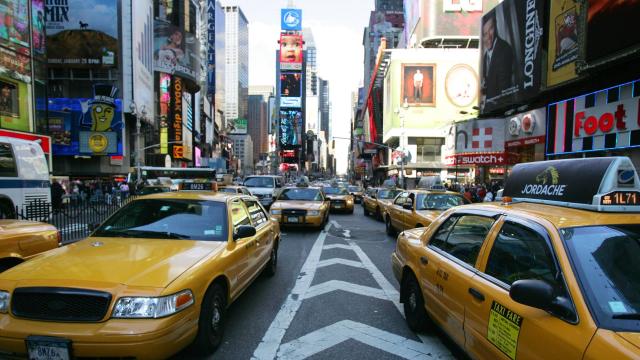New York City was set to make history in 2021. The city would’ve become the first in the U.S. to implement congestion pricing in Lower Manhattan to help curb traffic. Now, the closing off entire blocks to traffic. How ironic.
The Metropolitan Transportation Authority (MTA) CEO Pat Foye told reporters Wednesday that the program may not kick off in January 2021 without clear guidance from the federal government. The U.S. Department of Transportation has slow walked guidance the MTA needs to conduct an environmental review. With the government struggling to address the covid-19 outbreak that’s killed nearly 50,000 people in the U.S., city officials don’t have much faith that guidance is coming anytime soon.
Come the new year, drivers would’ve been charged extra for entering parts of Lower Manhattan. That money would, ultimately, fund fixing New York’s broken public transit system. The transit agency could really use the influx of cash these days. The subway has lost more than 90 per cent of its ridership, costing the MTA $US3.7 ($6) billion in revenue already. The agency has struggled to maintain its infrastructure even before the pandemic, and congestion pricing was supposed to help fill that gap. Yet right when the agency needs this money the most, the planned timeline for the program is feeling less and less likely.
The climate crisis is forcing us to reimagine what a carbon-free world will look like, and congestion pricing that also helps shore up public transit is one avenue to do that in New York. Sure, electric cars will play a role, but cars are not the future.
That’s especially true if we want to create a better, more just world for low-income people and communities of colour. This New York program included an equity component, too, ensuring that those who live below 60th Street”where this charge would apply”and who earn less than $US60,000 ($94,078) a year receive credits to offset the cost. It might take some getting used to, but this type of progressive policy would make New York a leader in its effort to both address climate change and improve transit infrastructure.
That said, there are other ways New York could be doing better in its response to the coronavirus and protecting citizens and the planet right now. Smaller cities around the U.S. are allowing residents to access the outdoors without risking exposure to the virus by closing off streets to cars. That way, pedestrians have more room to walk six feet apart. In New York, however, officials had only temporarily closed four small blocks. That ain’t shit, and the trial run is over. The city council, however, proposed closing off 120 kilometres of city streets last week. That’s a step in the right direction, but it’s still not enough given the size of New York. To put things into perspective, Oakland, California is slowly closing off 12 of streets. Brooklyn alone dwarfs that city in area and population.
There’s still a chance the federal government may tell New York officials whether they need to conduct a short environmental assessment or a full environmental impact statement. That would allow planners to begin the formal process of making congestion pricing a reality for New Yorkers.
Evne while they wait, though, New York City officials should consider closing off more streets. Cars may feel like a safe haven from the coronavirus, but we don’t all have the luxury of hopping into them. Some of us just want to get outside.
